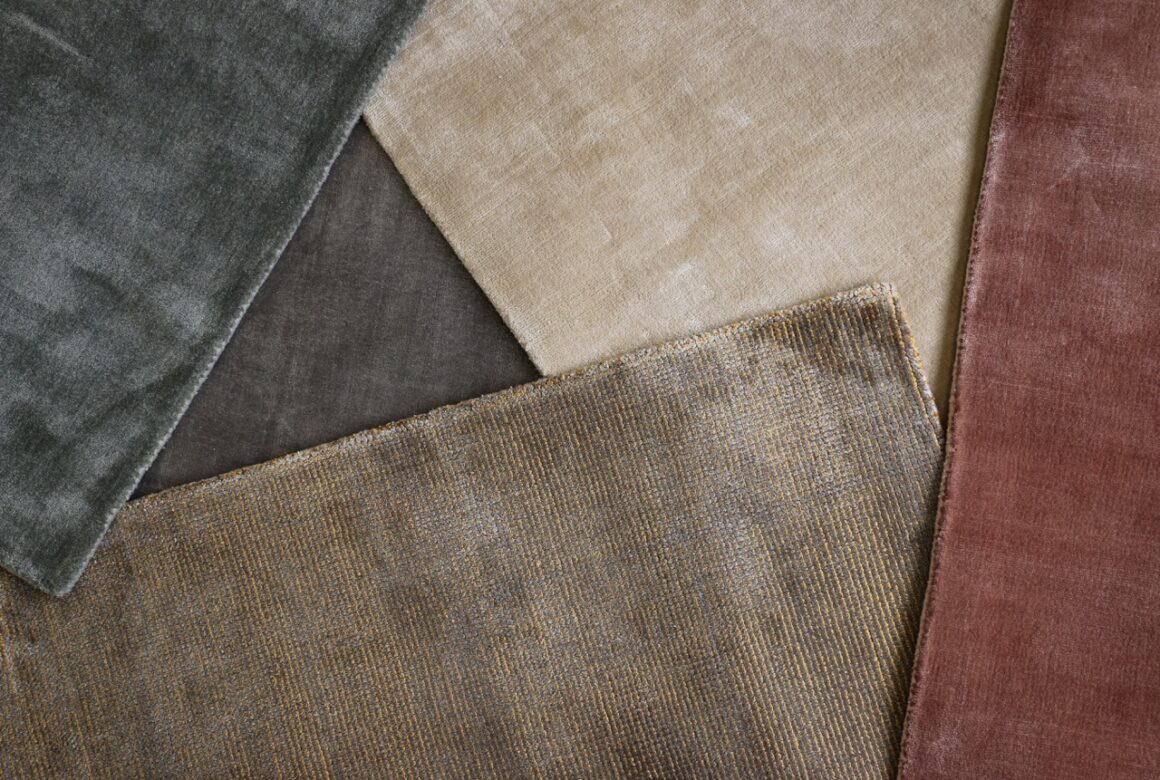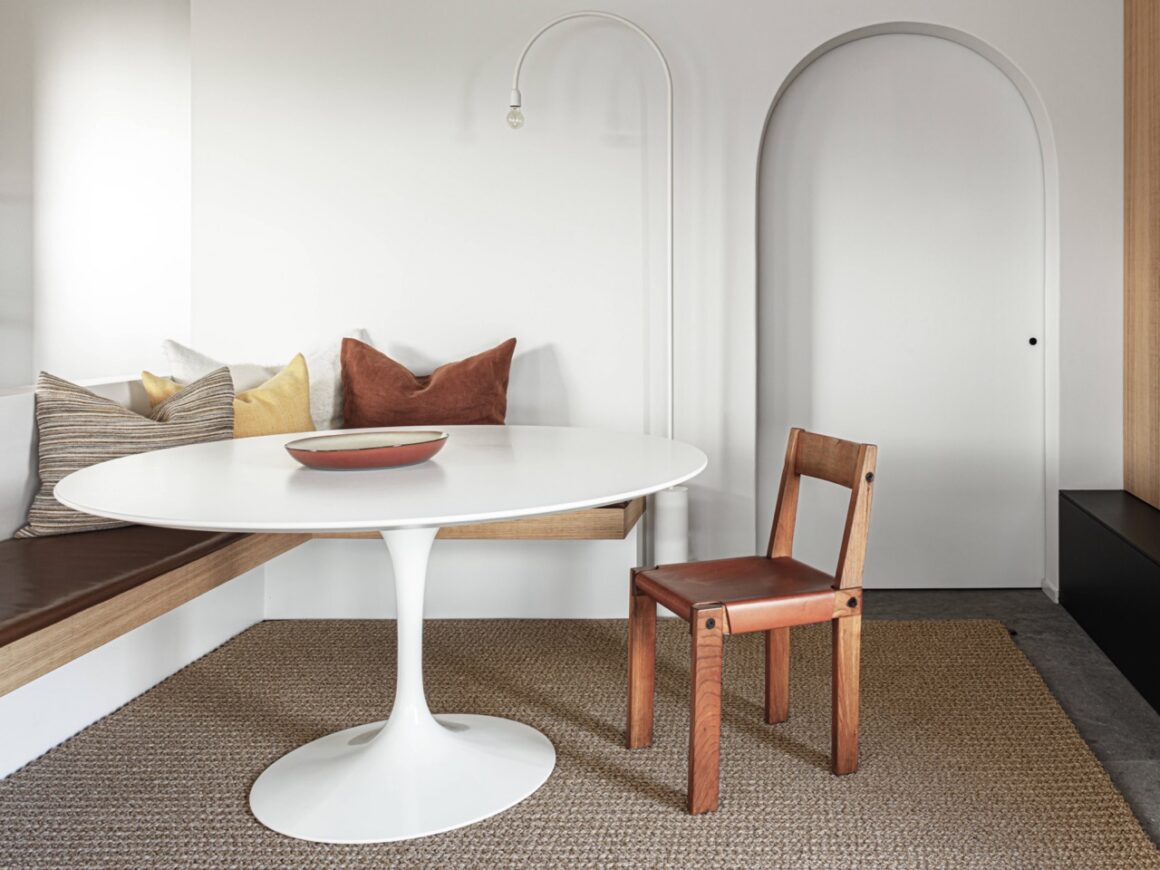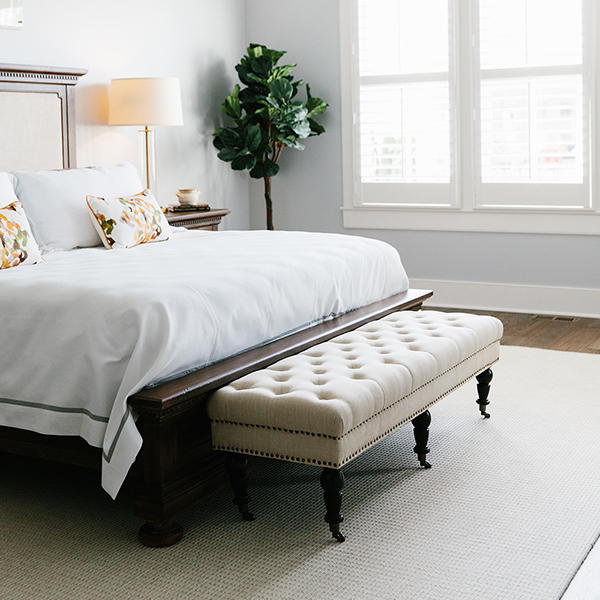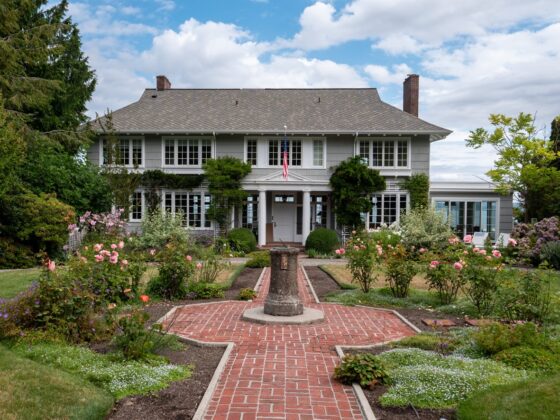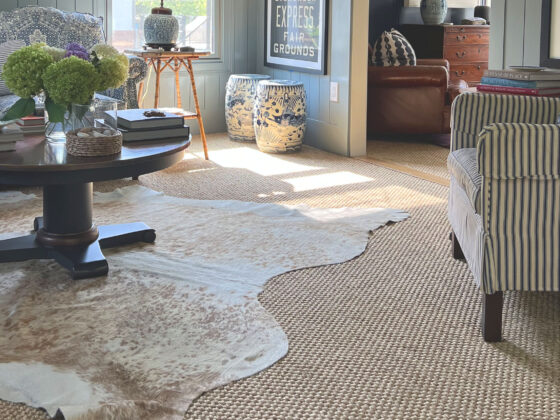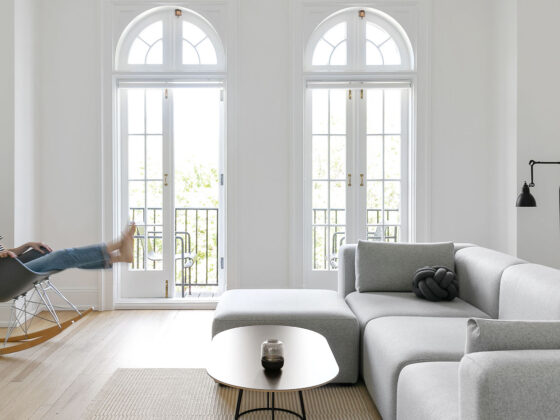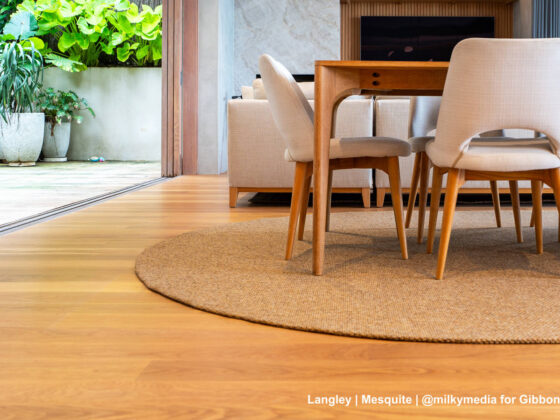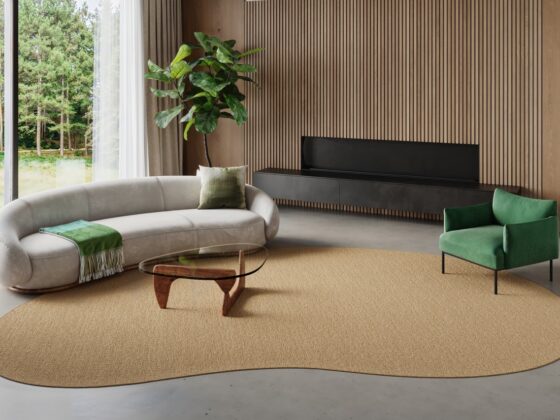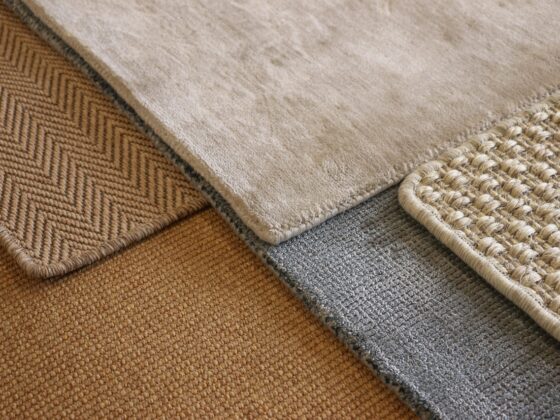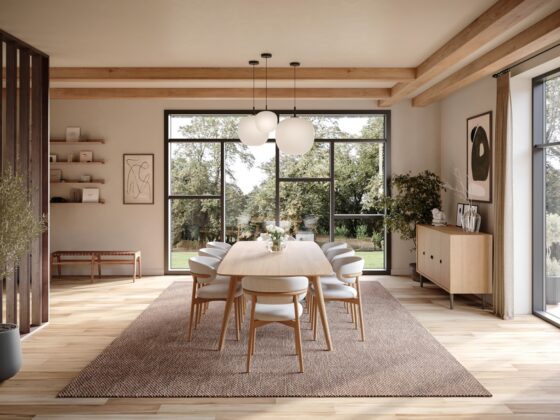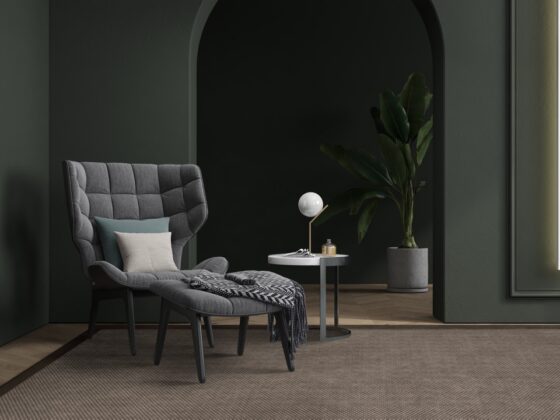Published February 2024 | Updated May 2025
The right rug color is pivotal in defining the ambiance and aesthetic appeal of your space. A well-selected rug anchors your room, adds character, and complements your interior design style. But how do you choose the best rug color for your project? Interior designers have a few time-tested strategies that result in a cohesive and intentional living space. We reviewed some of their top tips and created this guide to help you select a rug color that harmonizes with your style.
First, A Rug Color Quiz
Take our quick quiz to narrow down the color palette for your next rug.
Know Your Color Palette
The first step in determining the ideal rug color is to assess your existing color scheme. Identify dominant colors, accent hues, and any recurring themes or patterns. Your rug should complement these existing colors. If your room features neutral tones, embellish it with a rug in bold or bright colors. Conversely, if your room already has a lot of colors or patterns, a neutral or solid colored rug provides a counterbalance.

If you are revamping or remodeling your space, then look for inspiration and color ideas in design blogs (like ours!) and social media. There you can discover popular carpet colors or design trends to help shape your vision. But be realistic—even if you like Pantone’s color of the year, will you be able to live with it for years to come?
Looking for ideas for your next residential or commercial design project? Explore Commercial Projects and see how custom rugs and carpets bring beauty and performance to inspiring spaces worldwide.
Consider the Mood
Think about the atmosphere or vibe you want to feel when in the space. Warm red, orange, and yellow tones create a cozy and inviting atmosphere, while cool colors like blues and greens tend to evoke calmness and relaxation. Neutral colors like beige, gray, and white create serene environments and offer versatility since these colors can adapt to various styles and moods. And specific rooms call for different moods, so think about the purpose of each room as you consider rug colors.
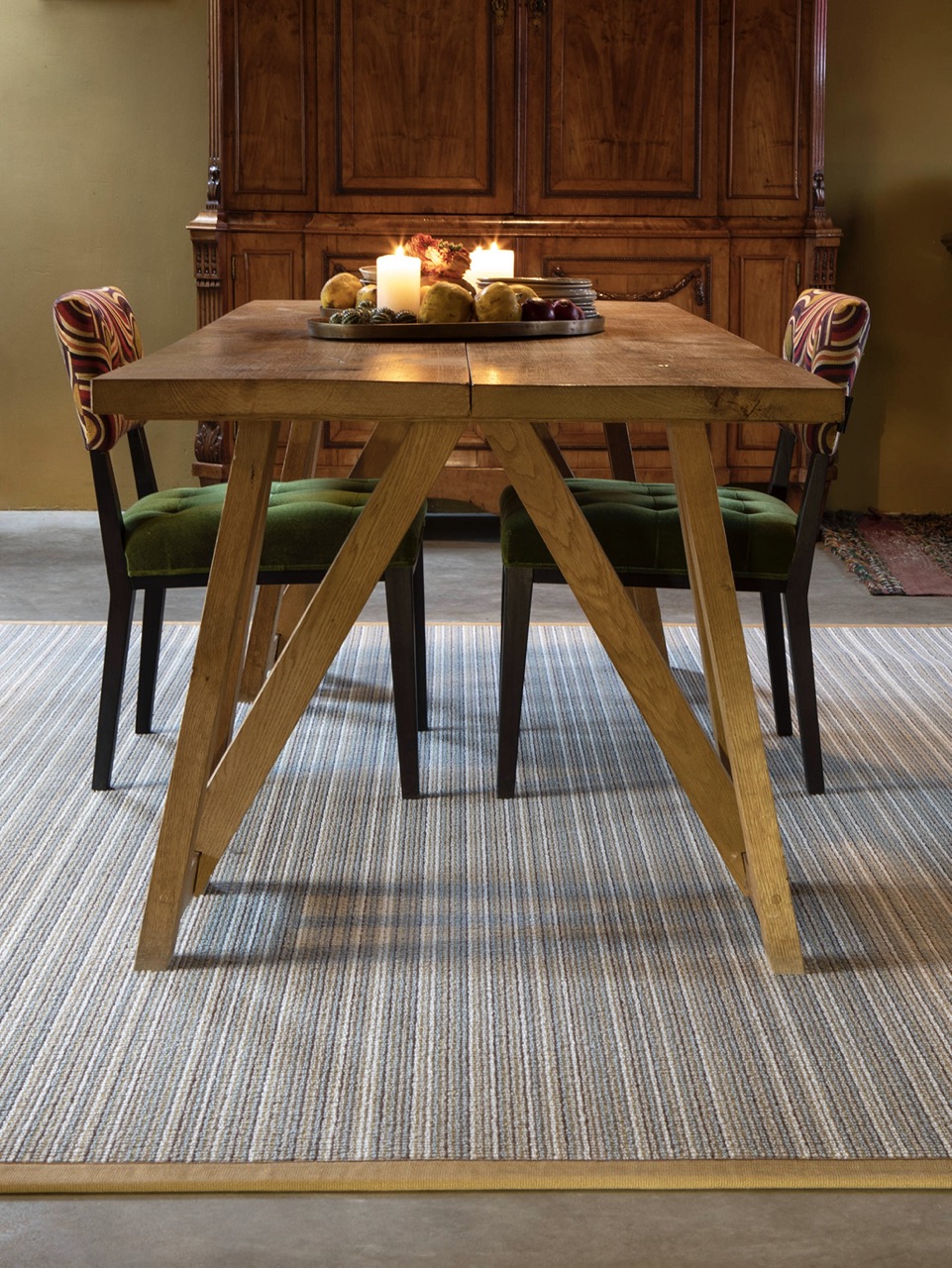
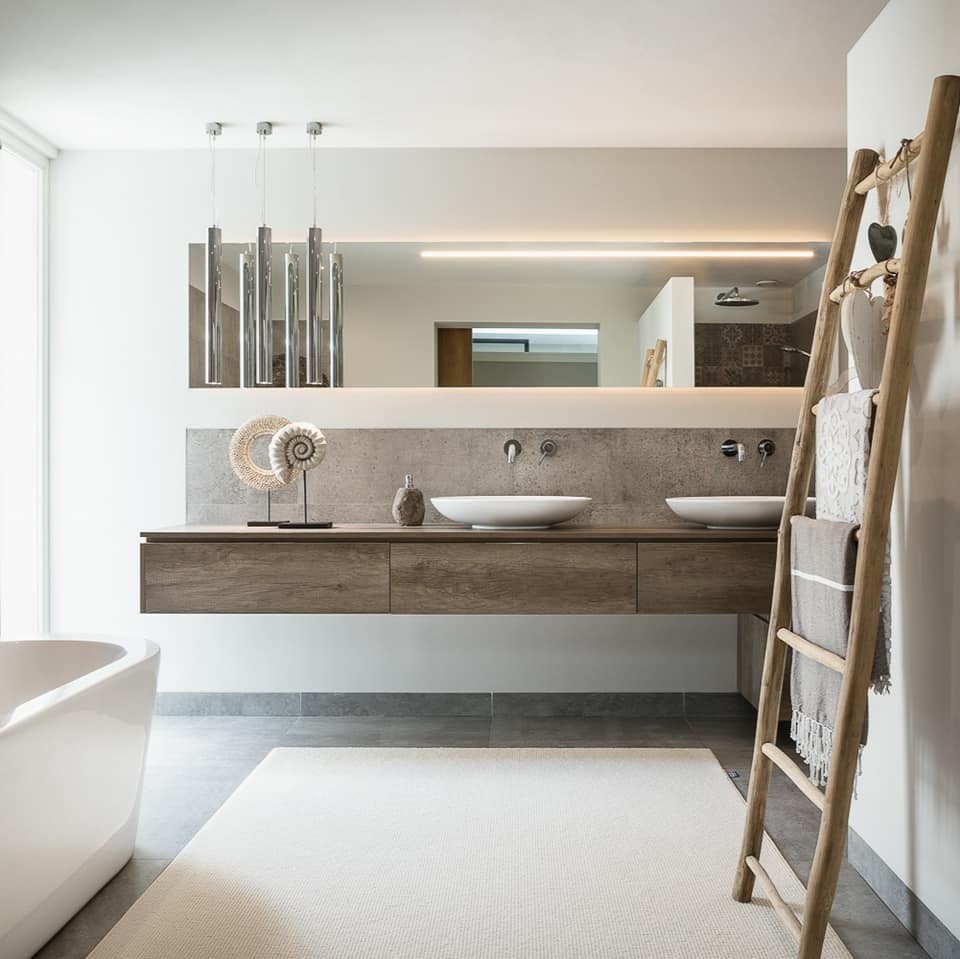
Factor in Your Interior Design Style
Interior design styles have general palette preferences that can guide your rug color choice. Here are some general recommendations based on designs styles:
MCM
Midcentury modernism is an enduring favorite amongst our clients. It offers flexibility—one designer may lean toward a minimalist approach, while another tends toward eclectism. Some MCM spaces have clean lines, an uncluttered look, and a muted color palette. Others display more robust shapes, beloved objects, and pops of color. Pick your tendency and balance your look with a neutral or a brightly colored rug.
Bohemian, Eclectic or Maximalist
Embrace vibrant colors and intricate patterns. Rugs with ethnic or floral designs in rich colors add another visual layer of interest to this multifaceted style. Alternatively, start with a foundation rug in warm, earthy tones and punctuate the space with bright accessories in reds, pinks, oranges, purples, and blues.
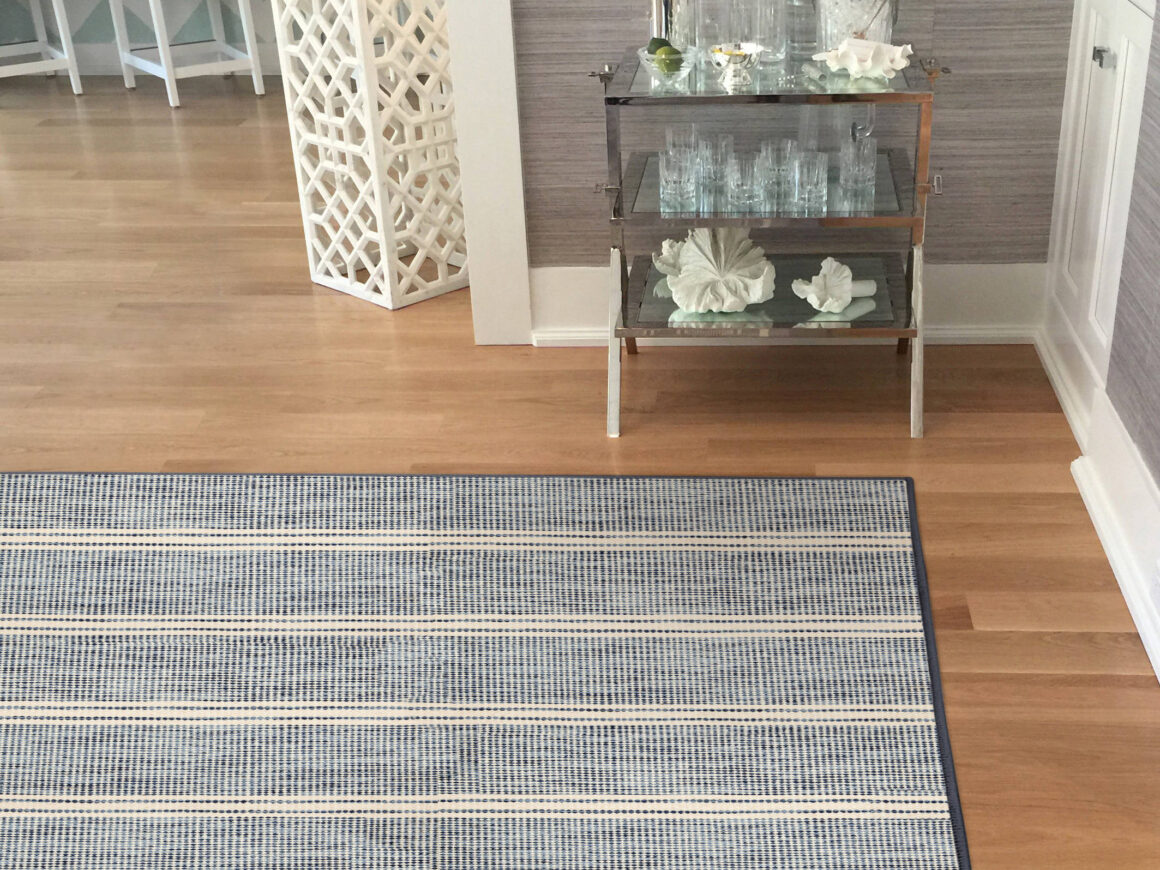
Nautical, Coastal or Beach
Rugs in deep colors or soothing neutrals are great options. For example, ocean-deep blues or bright teals are spot-on accent colors for a nautical or coastal aesthetic. A beach-y style with light neutrals like sandy whites or beiges is a great combination.
Choose light-colored rugs in soft hues that complement the light, airy feel of these styles. Pastels, beiges, warm whites, greys or greens are some of the tranquil colors that complement these décor styles. Textured rugs in simple patterns or muted, solid colors work as well.
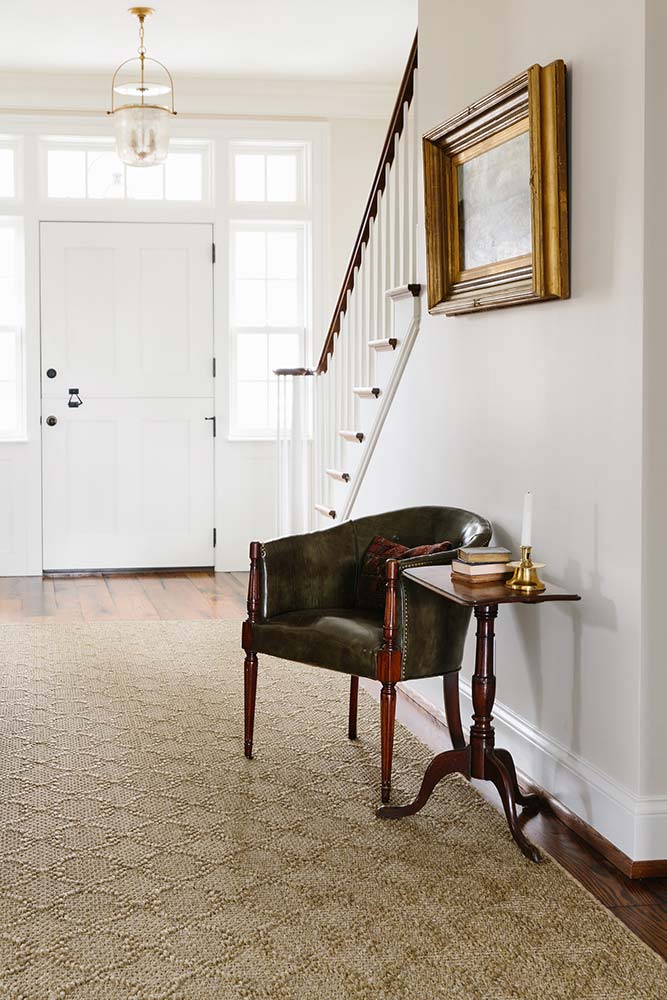
Transitional
This versatile approach to decorating offers freedom to pick and choose the design elements you love best. Hence, your rug color options are endless. This intersectional style is about balance. If you love your antique 19th century dining table but don’t love floral or plaid patterns, then a relaxed, natural fiber rug is perfectly allowed.
Traditional
Rugs with rich, deep colors like navy, burgundy, and forest green can add a touch of elegance and sophistication. Cascading patterns or eye-catching motifs in a delicate medley of colors are quintessentially traditional.
Learn more about your style…
and which rug works best with it in the post How to Choose the Right Rug for Every Design Style.
Be Practical
Beyond aesthetics, consider the rug’s functionality and maintenance. Do you have children or pets? Will the rug be in a high traffic area or a rarely used room? Do you have the ability to regularly maintain your rug or carpet with quick spot cleaning, routine deep cleaning, etc.? Which rug color hides dirt the best? Answers to these questions will lead you to what color rug you need.
Dark vs Light vs Neutral Colored Rugs
A dark area rug adds drama and often, much-needed contrast into a space. Darker hued rugs are great at hiding stains and wear and tear, making them suitable for high-traffic areas. And dark doesn’t mean dismal. Rich colors create mood and can act as a “bridge” between other elements, pulling out accent colors to achieve a cohesive look.
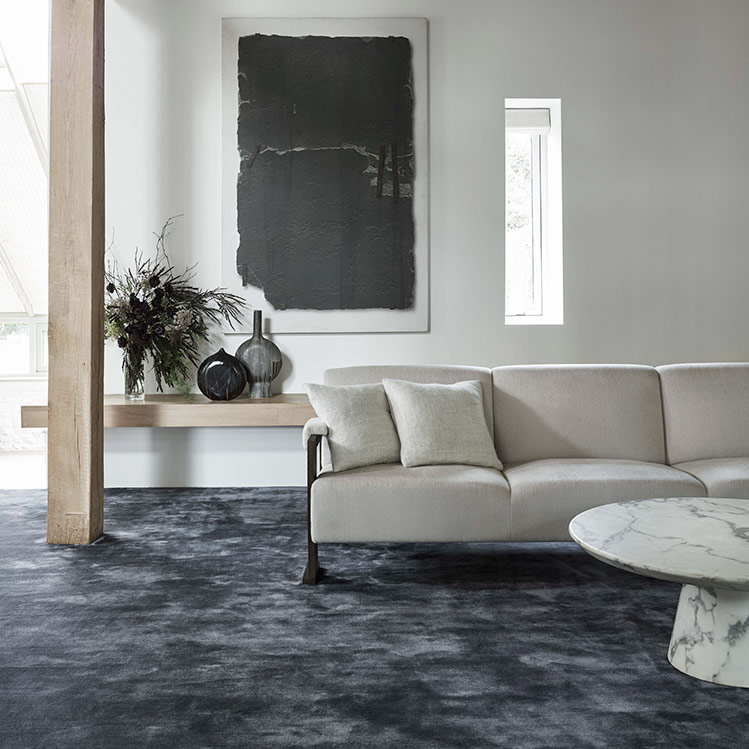
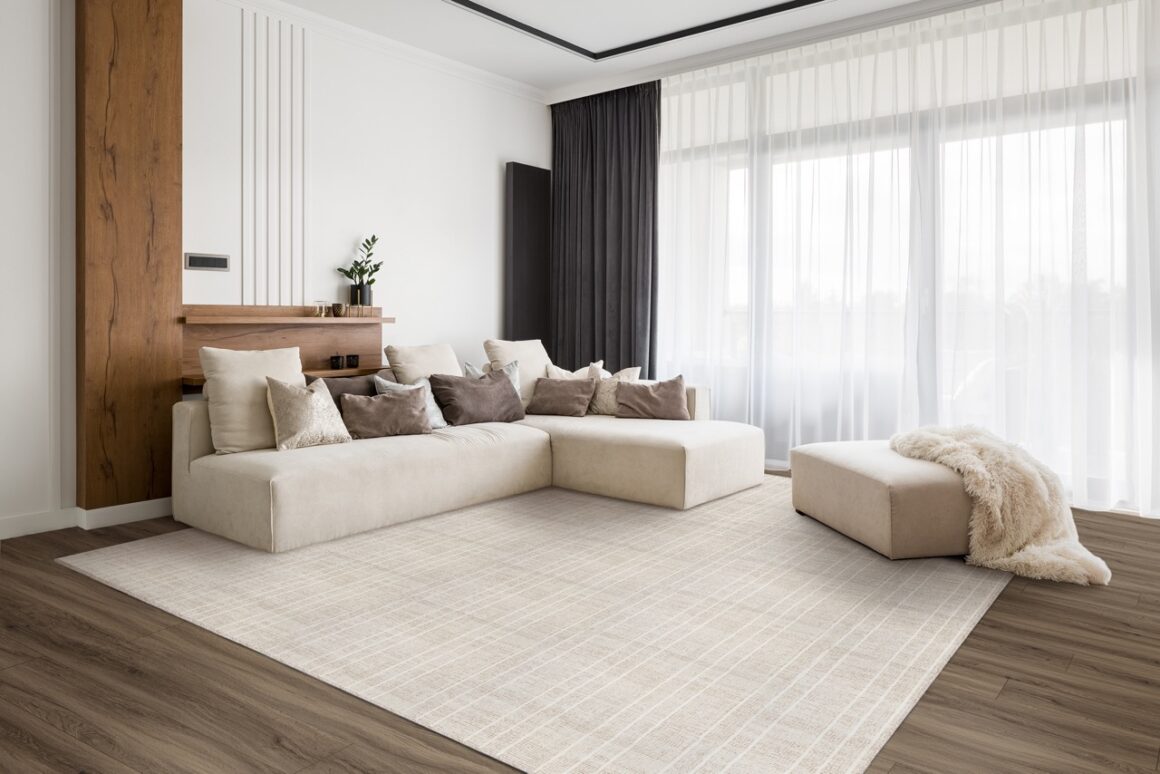
Light-colored rugs are uplifting and certainly brighten a room. But they require more frequent cleaning and will more easily show stains. A light-colored rug or carpet may perform well in an infrequently used room. If you love lighter hues, consider the material and the construction—some carpet fibers like wool or polypropylene clean up better than cotton or sisal rugs, and a tight weave construction is a lot easier to clean than a shaggy, high-pile carpet.
Neutral colors like tans or beiges are chameleons and blend well with all color schemes or design styles. A neutral-colored rug complements a monochromatic décor and fades into view, or it contrasts with other dominant, bolder colors for added drama. Both light and neutral-colored rugs create a calm expanse on the floor that doesn’t distract the eye.
But what about the color of the floor? Or the color of the couch?
Don’t worry, we have guides to help you navigate that too: Should my rug match my couch? and How to Pair Rug Color with Your Floor or Wall Colors
What color rug makes a room look bigger?
Sometimes the interior architecture of a space requires creative solutions. If a room is small, a white or light-hued rug makes the small space appear larger, especially if there is abundant light to bounce off the rug’s canvas.
Another way to help a room look bigger is to be sure you have the right size rug. A too-small rug only highlights the small size of the room, while an area rug that is way too large for the space creates a sinking, crowded feeling. The right sized rug should show the flooring around the edges and all furniture should fit on it. To learn more about rug sizing, read our rug size guide.
Multi Color Rugs
When should you opt for a multi color rug? First of all, avoid color competition. If you already have a busy, colorful space, a multi-colored area rug might be overload. In that case, be sure that the rug shares some of the dominant colors already on display in the space. This could be a good time to try color block or striped rugs—the scale of the repeat and the linear nature of this style provides a nice counterpoint to busy, colorful environments. If you have neutral colors in your furnishings or on the walls, a vibrant rug may be exactly what you need to make a statement.
Get Samples of Your Favorite Rugs + Colors
Before making a final decision, obtain samples or swatches of the rug colors you’re considering. View these samples in your space at different times of the day and see how natural and artificial light affects the color and how it interacts with your existing décor.
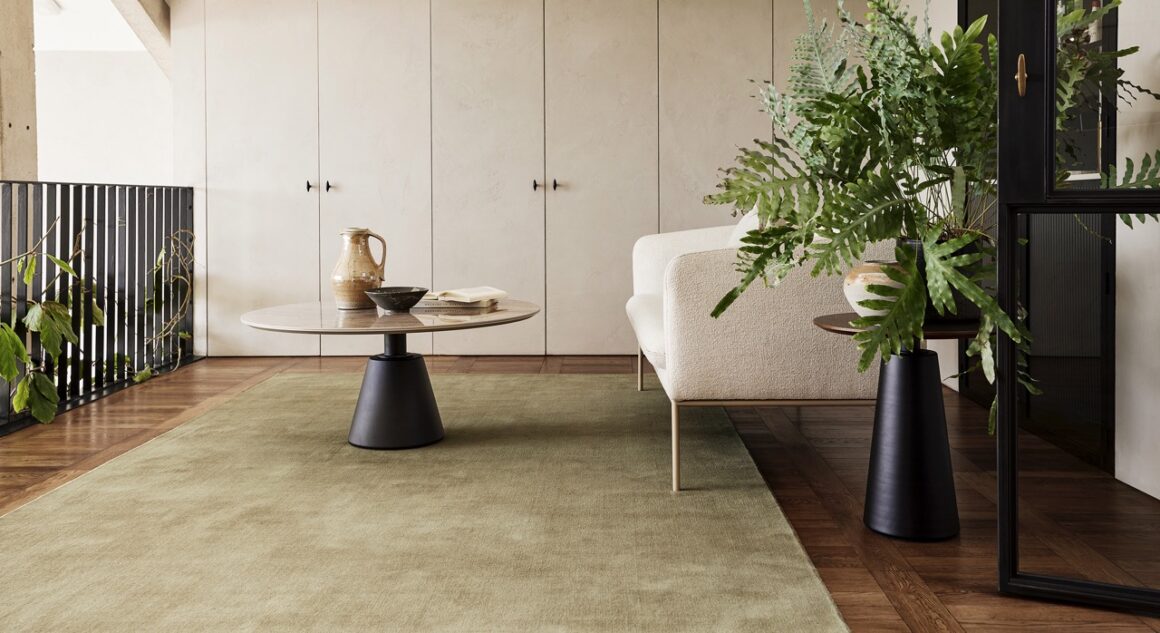
Our Rug Buying Guide is a one-stop shop for gathering all you need to know about buying a rug, from selecting the best material for your lifestyle to the delivery of your new rug.
Conclusion
Choosing the right rug color involves balancing aesthetics with practicality. By considering your existing color palette, desired mood, and interior design style, you can select a rug that not only complements your look but also enhances the overall ambiance of your space. Remember, the perfect rug is one that reflects your personal style while seamlessly integrating with your interior design.

